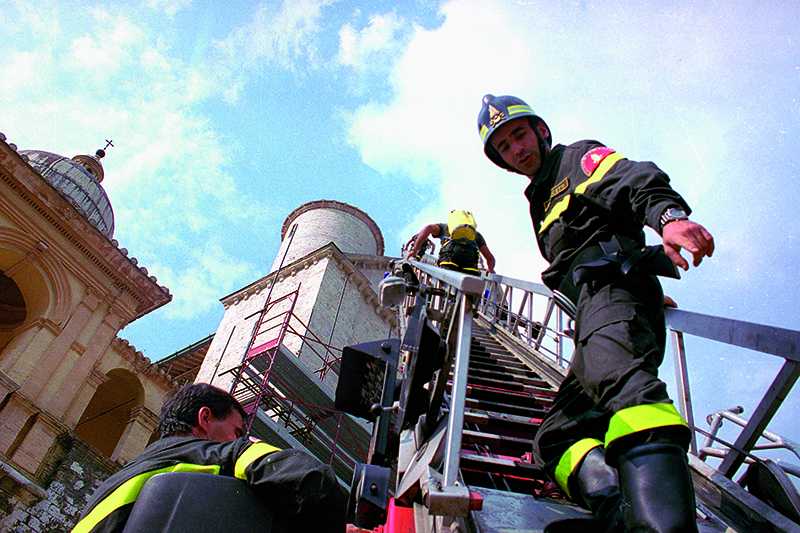The Umbria and Marche earthquake

On September 26, 1997, at 2:33 a.m., an earthquake of magnitude 5.7 struck central Italy along the axis of the Apennine mountain ridge between Umbria and Marche. The situation worsened when a second earthquake of magnitude 6.0 struck at 11:40 am. This marked the beginning of a series of earthquakes that lasted for months, affecting Umbria and Marche. The earthquakes mostly occurred between Gualdo Tadino and Nocera Umbra to the north and Sellano and Norcia to the south. Unfortunately, some earthquakes caused further damage to these regions, which are known for their rich history and art.
Overall, the number of victims was 11, and the municipalities affected were 48. Significant damage was recorded in the Umbria region in Assisi, Gubbio, Foligno, Norcia, Valfabbrica, Gualdo Tadino, Nocera Umbra and Sellano, and in the Marche region in Serravalle del Chienti, Camerino, Fiordimonte and Castelsantangelo sul Nera.
The regions affected by the disaster suffered immense damages and losses to their historical and artistic heritage. The damages ranged from the top of the bell tower of Foligno Cathedral to the historic tower of Nocera Umbra and from local museums to historic theaters. In the collective imagination, this emergency became widely associated with the collapse of the frescoed vault of the Upper Basilica of St. Francis of Assisi, a major destination for tourists and pilgrims worldwide.
Photo: Firefighter teams involved in securing cultural heritage / The National Fire and Rescue Service